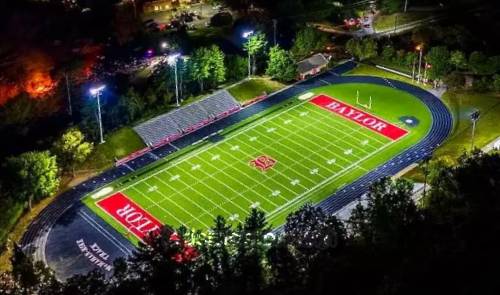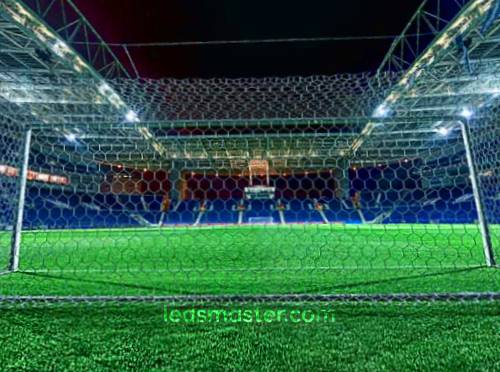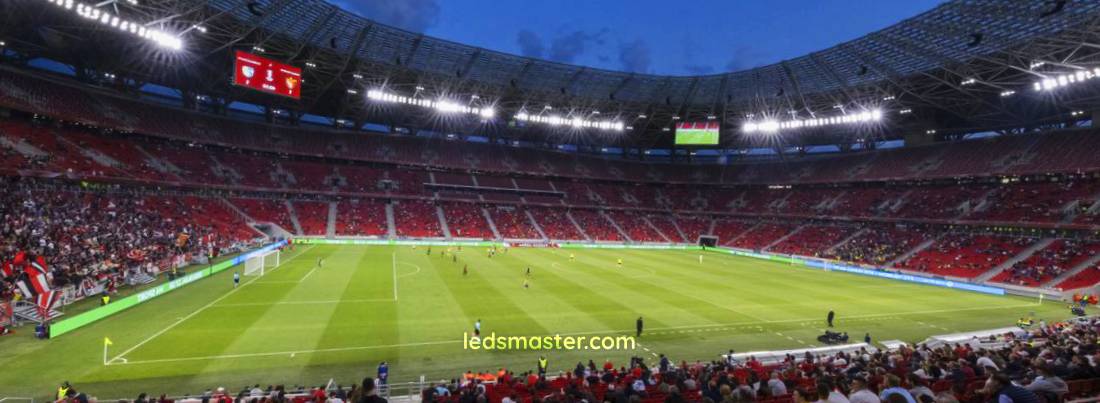Stadiums are not just places where athletes compete; they are venues where fans gather, community events take place, and entertainment is delivered to large audiences. One of the most important aspects of a stadium is its lighting system, which ensures the safety of players, enhances the viewing experience for fans, and supports the overall functionality of the venue. Upgrading or installing a new lighting system can be an expensive investment, but there are various funding opportunities available for stadiums to modernize their lighting infrastructure.
Table of Contents
ToggleUnderstanding the Need for Stadium Lighting Upgrades

Over the years, advancements in lighting technology have led to more energy-efficient and brighter systems that improve the quality of play and fan engagement. Traditional stadium lighting systems, which often rely on older technologies such as metal halide bulbs, are being replaced with LED systems that offer a range of benefits. These include reduced energy consumption, longer lifespan, lower maintenance costs, and a more uniform distribution of light across the playing field.
In addition to the technological advantages, there are regulatory and environmental factors pushing for lighting system upgrades. Many regions have introduced stricter lighting standards to ensure the safety of athletes and reduce light pollution in surrounding communities. With these factors in mind, it is clear that upgrading stadium lighting is no longer just a luxury but a necessity for many sports venues.
Exploring Different Types of Funding for Stadium Lighting Improvements
| Funding Source | Description | Eligibility | Financial Support | Examples |
|---|---|---|---|---|
| Government Grants | Federal, state, and local grants designed to support energy-efficient and infrastructure projects. | Public sector entities, including stadiums, local governments, and community venues. | Can cover up to 50% of lighting upgrade costs. | U.S. Department of Energy (DOE) programs, State-level energy efficiency grants |
| Utility Company Incentives & Rebates | Incentives and rebates from utility providers to encourage the adoption of energy-efficient lighting systems like LEDs. | Commercial properties, including sports stadiums, served by utility providers. | Rebates can cover up to 30% of total costs or more. | Pacific Gas and Electric (PG&E) rebate program, energy audits |
| Private Grants & Sponsorships | Financial support from private companies or organizations, often through corporate social responsibility (CSR) programs or partnerships. | Sports venues and organizations, especially those with a focus on sustainability. | Varies by sponsor; may cover full or partial cost. | Sponsorships from lighting manufacturers, CSR programs from energy providers |
| Crowdfunding & Community-Based Funding | Raising funds through online platforms by engaging local supporters and the community. | Smaller, privately owned stadiums, or community-based venues with strong local support. | Varies; dependent on campaign success. | GoFundMe, Kickstarter campaigns for local stadium upgrades |
Upgrading a stadium’s lighting system is an expensive and complex process. Many stadiums struggle with securing the funds required for such a significant investment. However, there are several funding opportunities available for sports facilities to modernize their lighting systems. Local governments, utility companies, private organizations, sports leagues, and even the community offer various sources of funding. Each funding source has its specific advantages, and by combining different options, stadiums can reduce the financial burden of upgrading their lighting systems.
Stadiums can explore a variety of financial mechanisms such as government grants, utility incentives, private sponsorships, and crowdfunding. By strategically seeking out these opportunities, stadiums can manage the costs associated with their lighting upgrades, ensuring that they benefit from energy-efficient, sustainable, and modern lighting systems.
Government Grants for Stadium Lighting Projects
 Government grants are one of the most widely available and beneficial funding sources for stadium lighting upgrades. These grants are typically offered by federal, state, and local agencies to support energy-saving projects, improve infrastructure, and reduce environmental impacts. By taking advantage of government-funded programs, stadiums can significantly offset the costs of lighting improvements.
Government grants are one of the most widely available and beneficial funding sources for stadium lighting upgrades. These grants are typically offered by federal, state, and local agencies to support energy-saving projects, improve infrastructure, and reduce environmental impacts. By taking advantage of government-funded programs, stadiums can significantly offset the costs of lighting improvements.
Federal Government Grants
At the federal level, the U.S. Department of Energy (DOE) provides several funding opportunities for public facilities, including sports stadiums, to enhance energy efficiency. The Energy Efficiency and Conservation Block Grant (EECBG) Program is one such initiative that supports projects aimed at reducing energy consumption, including lighting upgrades in public buildings. The DOE’s Better Buildings Challenge also provides technical and financial assistance to help facilities reduce their energy use, which includes upgrading lighting systems to more energy-efficient technologies like LEDs.
In fiscal year 2020, the Better Buildings Challenge committed to supporting over 1,000 partners across the country to reduce energy use. These programs help organizations achieve up to 30% energy savings annually, and stadiums can benefit from these initiatives by upgrading their lighting systems to more efficient options.
State and Local Government Grants
State and local governments also have dedicated programs to support energy-efficient projects. These grants are often geared toward reducing energy consumption, enhancing sustainability, and lowering the carbon footprint of public venues. Many state governments offer specific funding for lighting upgrades and often focus on promoting the use of renewable energy sources or minimizing light pollution. For example, the state of California provides various energy-efficiency incentives, including lighting upgrades for stadiums that adhere to sustainable practices.
A typical grant may cover up to 50% of the lighting upgrade cost, depending on the size of the facility and the energy-saving potential. Some states even offer additional incentives for projects that further their environmental sustainability goals, such as efforts to reduce greenhouse gas emissions.
Utility Company Incentives and Rebates
Utility companies are increasingly proactive in encouraging commercial and industrial facilities, including sports venues, to adopt energy-efficient technologies. One of the main methods these companies use to facilitate this is through offering incentives and rebates for the installation of energy-efficient lighting systems.
Incentives for LED Lighting Upgrades
 LED lighting is one of the most energy-efficient options available for stadiums. Many utility companies offer substantial rebates to offset the initial cost of switching to LED lights. These rebates can cover up to 30% of the total cost of upgrading a stadium’s lighting system, and in some cases, utility companies may cover an even greater percentage depending on the energy-saving potential of the lighting system. Utility programs aim to reduce energy consumption and help meet sustainability goals set by local governments.
LED lighting is one of the most energy-efficient options available for stadiums. Many utility companies offer substantial rebates to offset the initial cost of switching to LED lights. These rebates can cover up to 30% of the total cost of upgrading a stadium’s lighting system, and in some cases, utility companies may cover an even greater percentage depending on the energy-saving potential of the lighting system. Utility programs aim to reduce energy consumption and help meet sustainability goals set by local governments.
For example, Pacific Gas and Electric (PG&E) offers up to $1,000 per fixture for commercial properties, including sports venues, that switch to LED lighting. These rebates can significantly lower the financial burden for stadiums undertaking lighting system upgrades.
Energy Audits and Additional Benefits
Many utility providers also offer free or discounted energy audits, which can be invaluable for stadiums looking to upgrade their lighting systems. These audits help identify areas where energy savings can be achieved, with recommendations to implement LED lighting and other energy-saving technologies. By taking advantage of these audits, stadiums can ensure they are making the most efficient use of energy-saving incentives.
Utility companies may also provide additional bonuses or incentives for projects that further contribute to sustainability, such as reducing carbon emissions or incorporating renewable energy sources into the lighting system.
Private Grants and Sponsorships

Beyond government funding and utility rebates, private corporations and organizations may offer financial support for stadium lighting upgrades. Many companies in the energy, technology, and sports sectors have corporate social responsibility (CSR) programs that provide funding for energy-efficient or community-based projects.
Corporate Social Responsibility Programs
Energy providers, lighting manufacturers, and other corporations may offer funding for stadium lighting projects that help promote sustainability and environmental stewardship. These corporations may view funding stadium lighting upgrades as an opportunity to showcase their commitment to environmental causes. For instance, lighting companies may partner with stadiums to install their latest energy-efficient products and, in return, offer financial assistance or a reduced price on the lighting systems.
In 2020, the global lighting market was valued at $94 billion, with LED lighting comprising the largest share due to its energy efficiency. This growing sector offers opportunities for collaborations between lighting companies and sports venues that prioritize sustainable practices.
Sports League Funding Initiatives
In addition to corporate sponsorships, sports leagues and organizations can provide financial support for stadium lighting improvements. Major leagues such as the National Football League (NFL) and Major League Baseball (MLB) have allocated funds to assist with facility improvements. These grants or funding initiatives help stadiums enhance their infrastructure, including upgrading lighting systems to improve the overall fan experience.
For example, the NFL’s “NFL Foundation” has supported facility upgrades for local teams, and MLB has a history of funding initiatives to modernize facilities at the community level. These leagues often offer funding or sponsorships for stadiums to improve their facilities, including lighting systems, to meet the standards expected for professional games and enhance fan safety.
Crowdfunding and Community-Based Funding
For smaller stadiums or community-owned sports facilities, crowdfunding can provide an alternative or supplementary source of funding. This option allows stadiums to directly engage with the local community and fans, raising money to help finance lighting upgrades through online platforms like GoFundMe, Kickstarter, or Indiegogo.
Engaging the Local Community
Crowdfunding allows smaller, privately-owned venues to tap into their fan base and local businesses to raise money for stadium improvements. This approach creates a sense of community involvement, with fans directly contributing to the success of their local sports venue. In return for their donations, stadiums can offer rewards such as tickets to games, merchandise, or recognition on donor walls.
Crowdfunding campaigns can be a valuable tool when combined with other funding sources. For example, a small stadium might raise $10,000 through crowdfunding, which could be supplemented with government grants or utility rebates to complete the lighting upgrade.
Successful Campaigns
Crowdfunding campaigns have gained popularity in recent years. Successful campaigns can raise significant amounts of money for small or community-based venues. For instance, a crowdfunding campaign launched by a minor league baseball team in 2019 raised over $50,000 to fund the installation of new LED lights at their stadium.
While crowdfunding may not fully cover the cost of an entire lighting upgrade, it can help reduce the financial burden and encourage local support for stadium projects.
The Financial Impact of Upgrading to Energy-Efficient Lighting Systems
One of the most compelling reasons for stadiums to invest in lighting system upgrades is the potential for long-term financial savings. The transition to energy-efficient lighting, such as LED systems, can drastically reduce energy consumption, leading to lower utility bills over time. In fact, stadiums that switch to LED lighting can save as much as 50% to 70% on energy costs compared to traditional lighting systems.
Beyond energy savings, LED lighting systems also require less maintenance, further reducing long-term operational costs. The extended lifespan of LEDs, which can last up to 50,000 hours compared to the 20,000 hours of a typical metal halide bulb, means that stadiums will spend less on replacement bulbs and maintenance services.
Steps to Apply for Stadium Lighting Grants
Navigating the grant application process can be daunting for stadium administrators, but by following a structured approach, stadiums can improve their chances of securing funding for lighting improvements.
Researching Available Grants
The first step in applying for funding is identifying the grants that are available for stadium lighting projects. This requires thorough research, as there are various funding opportunities offered by different levels of government, utility companies, and private organizations. Stadiums can start by checking with local and state government websites, energy efficiency programs, and utility providers to find available grants and incentives.
Additionally, online databases like Grants.gov and Foundation Center can help identify specific grants related to energy efficiency and public infrastructure improvements. These databases provide a comprehensive list of federal, state, and private funding opportunities.
Preparing the Application
Once potential grants have been identified, the next step is to prepare a well-crafted application. This process typically involves providing detailed information about the stadium, the current lighting system, and the proposed upgrades. Stadiums should highlight the energy savings, safety improvements, and community benefits that the new lighting system will provide.
In some cases, grant applications may require stadiums to provide cost estimates for the proposed lighting upgrades, as well as information about the contractors or suppliers involved. It is important to ensure that the application meets all the requirements of the grant program to increase the chances of approval.
Collaboration with Experts
Some stadiums may choose to work with energy consultants or contractors who specialize in stadium lighting to help with the application process. These experts can assist in assessing the existing lighting system, recommending suitable upgrades, and preparing the technical documentation needed for grant applications.
Submitting the Application
Once the application is complete, it should be submitted according to the specific guidelines of the grant program. Many grant programs have strict deadlines, so it is important to ensure that all paperwork is submitted on time. It is also a good idea to keep a copy of the submission for future reference.
Maximizing the Benefits of Stadium Lighting Upgrades
Securing funding for stadium lighting improvements is only part of the process. Once the funding is in place and the upgrades are complete, stadiums should focus on maximizing the benefits of their new lighting systems.
Enhancing Fan Experience
One of the most noticeable improvements of a new lighting system is the enhancement of the fan experience. Bright, uniform lighting allows for better visibility during night games, improving the overall atmosphere. It can also create opportunities for more engaging game presentations, including lighting effects and video displays, which have become common in modern sports events.
Increasing Venue Utilization
Upgraded lighting systems can also lead to increased venue utilization. With better lighting, stadiums can host a wider range of events, including night games, concerts, and community activities. This increased usage can generate more revenue, helping to offset the cost of the lighting upgrade.
Meeting Environmental Standards
Many stadiums are under pressure to meet environmental sustainability standards, and upgrading to energy-efficient lighting systems is one of the most effective ways to reduce a stadium’s environmental footprint. By adopting LED lighting and reducing energy consumption, stadiums can demonstrate their commitment to sustainability and enhance their reputation in the community.
Final Thoughts
Securing funding for stadium lighting system upgrades is a valuable investment that benefits both the stadium and the community. With a variety of funding opportunities available, from government grants to utility incentives and private partnerships, stadiums can find financial support to make these important improvements. Upgrading lighting systems not only enhances the safety and experience of athletes and fans but also offers long-term financial and environmental benefits. By taking the time to explore available funding options and carefully planning the upgrade process, stadiums can illuminate their future in a cost-effective and sustainable manner.

